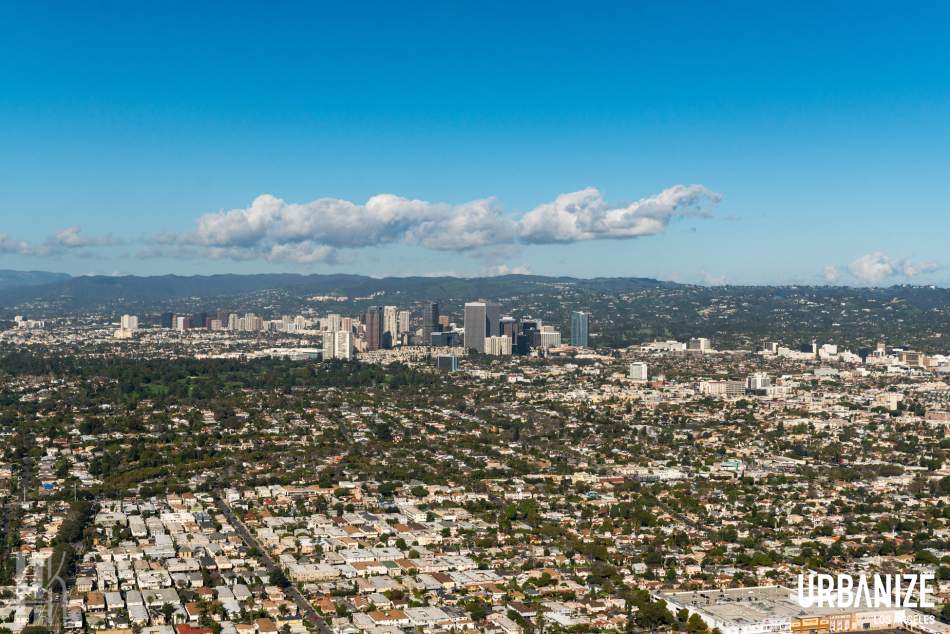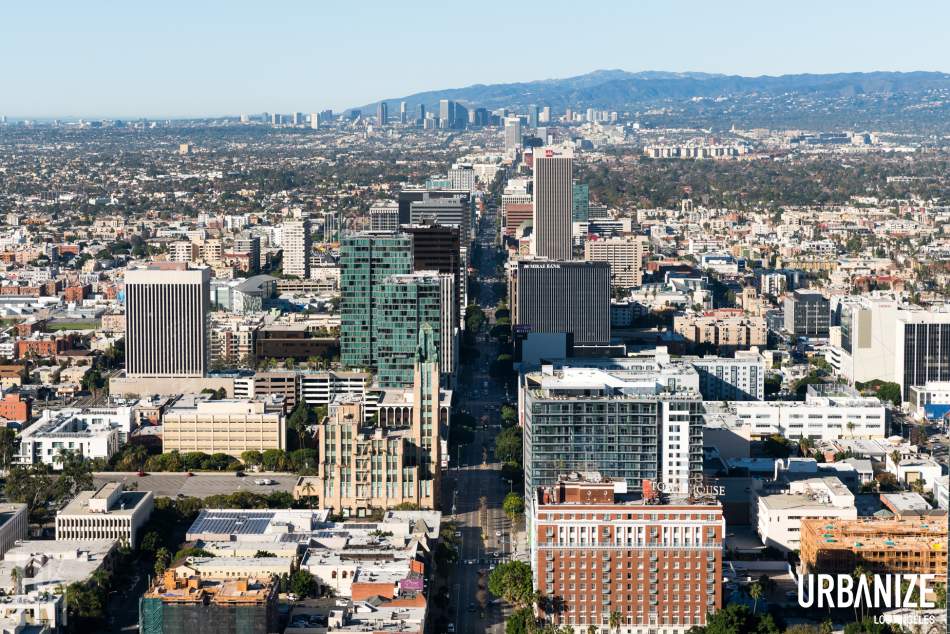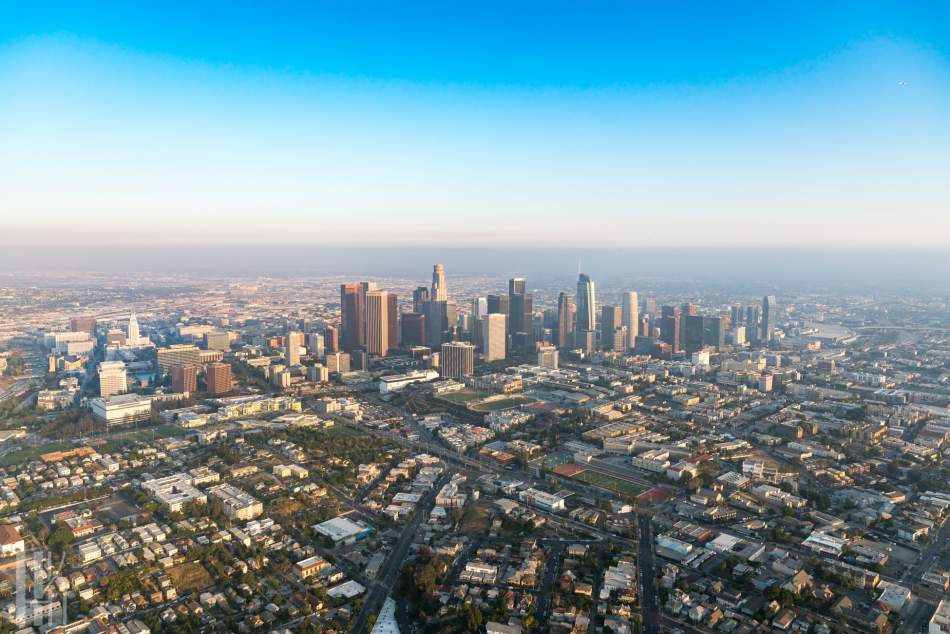In 2020, Los Angeles’ housing problems went from bad to worse.
Before this difficult year, L.A. was already faced a severe housing shortage. Median rent increased an eye-popping 65% since 2010, placing a heavy burden on lower-income households. High housing costs have made homeownership unattainable for most families, pushed households into less-expensive exurban areas which come with longer commute times traffic, and unhealthy air quality). Moreover, housing costs have contributed to a record high in families experiencing homelessness for the first time. Labeling this situation a crisis has become clichéd.
And yet, this year’s compounding calamities have only heightened the urgency to address housing affordability. The COVID-19 pandemic caused heavy job losses, putting hundreds of thousands of Angelenos at risk of eviction. Increasingly destructive wildfire seasons demonstrate the need for safe housing away from fire risk zones. And in the midst of activists’ efforts to call attention to racial injustice, we can’t ignore the fact that L.A.’s neighborhoods remain heavily segregated by race and income. Exclusionary zoning - including an effective ban on apartment construction on 75% of L.A.’s residentially-zoned land - makes it harder for Black and Latino families to access affordable homes in amenity-rich neighborhoods.
Despite these serious challenges, we haven’t lost hope. In fact, we believe that 2021 could be the year in which Los Angeles finally gets serious about fixing its housing crisis. Every eight years, state law requires cities to revise their land use policies in order to achieve a housing growth target. To do this, cities update the “housing element” of their general plan, identifying sites for new development and rezoning to accommodate more homebuilding. These updates must be completed by October 15, 2021 – less than one year from now.
Under this system, Los Angeles must plan for 456,000 new homes by 2029, including 184,000 that are affordable to lower-income households. Achieving this target would expand the city’s housing supply by one-third, going a long way towards relieving the shortage.
Naturally, how L.A. plans for this many new homes is a critical consideration. We have an opportunity to transform our city for the better, increasing housing affordability, encouraging transit use, reversing segregation, and creating shared economic prosperity. To build this future, every neighborhood must be part of the solution.
The Department of City Planning can play a leading role in crafting this solution. When Planning updates L.A.’s housing element, it should begin by estimating how much new housing each neighborhood needs. Planning can create these estimates using objective, quantifiable factors like median income, the cost of for-sale and rental housing, environmental quality, patterns of exclusion and segregation, and access to transit, jobs, and schools. Using this information, Planning would then identify locations for housing production and recommend zoning changes, enough for each neighborhood to meet its estimated housing need and for Los Angeles to achieve the citywide 456,000-home goal.
This holistic, data-driven approach would result in more homes being built where they’re needed the most. Neighborhoods with lots of jobs, good transit access, and high housing costs would plan for the most housing growth. This process would also set an ambitious housing target in every neighborhood, ensuring that new housing opportunities are distributed throughout Los Angeles.
We believe this is the right way to plan for L.A.’s future. Creating more housing in high-cost neighborhoods increases affordability and reduces displacement pressure on communities of color. Allowing more people to live near transit and jobs makes commutes more convenient and fights climate change. And when lower-income families have access to affordable housing in high-opportunity neighborhoods, more children can achieve their full potential in life.
Of course, we know that transformative change will not come easily. All too often, planning and land use decisions are highly politicized, with individual city councilmembers deciding what is built in their district. This has created a “pay-to-play” culture at City Hall, where for-profit developers fill campaign coffers, and receive a glide path to project approval in return.
This process is also easily dominated by wealthy NIMBYs, who vocally resist change at all costs and frequently have the ear of their councilmember. This means that rezoning, if it happens at all, tends to occur in lower-income communities that lack political influence.
Logrolling and political influence shouldn’t determine housing policy. A better approach is needed, and this requires courage from our city’s leaders.
That’s why we’ve formed a coalition of 17 civic organizations, representing small business owners, affordable housing nonprofits, environmentalists, and pro-housing advocates. Together, we’re asking Mayor Eric Garcetti and the City Council to distribute L.A.’s housing growth target across its neighborhoods, based on an objective estimate of each neighborhood’s housing need. This would empower Planning to set a new course for housing policy in L.A.
With 11 months left until October 15, 2021, every day counts. Let’s not waste a minute in planning for a Los Angeles with housing for all.
Anthony Dedousis (@anthonydedousis) is director of policy and research for Abundant Housing L.A., a pro-housing education and advocacy organization. Robin Hughes (@abodesweethome) is president and CEO of Abode Communities, a nonprofit affordable housing provider. A. Lenise Kouture (@alenisekouture) is president and CEO of the International Black Restaurant and Hospitality Association, a social enterprise representing the Black hospitality and leisure industries.









